Types of Soil To Grow Plants In
What is Soil?
Soil is the one growing medium we are all familiar with. In its most literal form, soil is the upper layer of the land. The types of soil contain different materials, including:
- Minerals
- Water
- Air
- Gases
- Organic matter
- Live bacteria and other types of soil based organisms
Different soil types hold varying levels of water and nutrients, so this makes it an ideal place (as well as the natural place) for most plants to grow.
Different Types of Soil For Indoor and Outdoor Growing
Soil used for indoor growing is different to the types of naturally occurring outdoor soil. Therefore, before you choose the type of soil you want to use for your indoor growing, you’ll want to consider a few things, such as:
- Drainage
- Water retention
- pH
Used indoor, soil isn’t being used in its natural environment, so it won’t be exposed to natural seasons, like: frost and thaw, rainfall etc. For this reason, indoor soil comes in several forms and is made to cater for certain plants and conditions.
Indoor types of soil or “potting mixes” are usually made up of at least 2 of the 4 types of soil, which are detailed below.
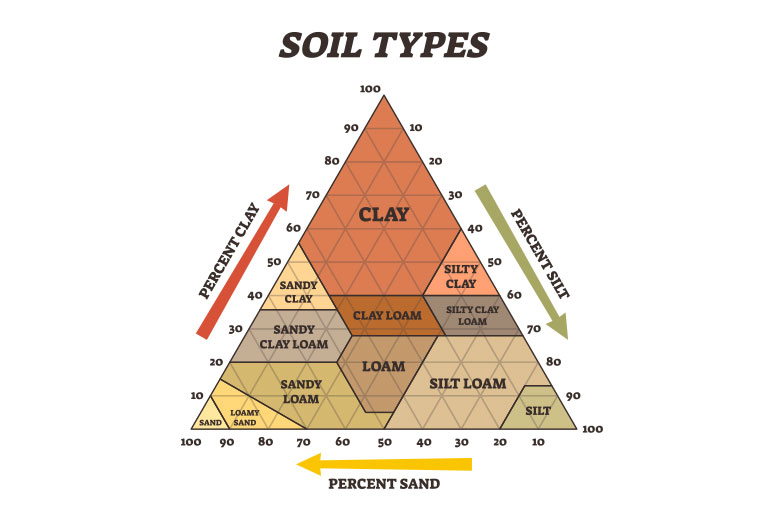
Benefits of Growing in Different Types of Soil
Good for Beginners
If you’re looking to start growing indoors, then one of the most forgiving ways to do so, is in plant pots or container using a type of soil. Using hydroponic substrates can be more challenging and costly to set up.
Soil already contains a natural level of nutrients. Using a type of soil to grow indoors can give you many benefits, such as:
- More leeway in terms of feeding your plant
- Simpler irrigation in any type of soil versus watering plants in hydroponic systems
- Fertilisation is easier to deal with in soil
- If you’re having issues, finding soil fixes is easier
Essential for Organic Growing
When its comes to growing organically, using soil is essential. Soil contains live microbes and organisms (soil flora). The soil flora helps to break down the organic plant food into a form that is soluble for your plants. This isn’t something that can happen naturally in an inert substrate, such as Coco.
Improves Flavour and Aroma
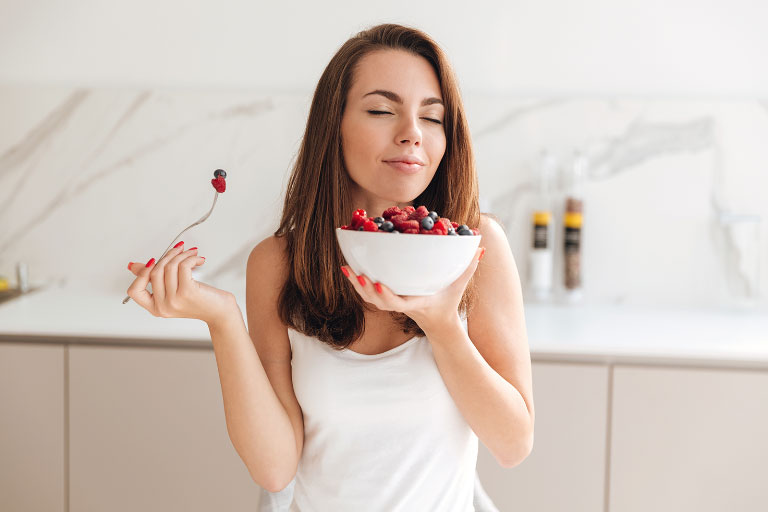
Soil is a good option if you’re looking at growing Fruit, Vegetables or Herbs. Its use is guaranteed to provide a deeper flavour and aroma to your fresh produce. Gardeners mostly comment that soil-grown produce has a deeper flavour compared with that grown in another mediums, such as coco.
Types of Soil – A Media For All Types of Plants
Soil potting mix is available in a variety of forms. Depending on the plants you’re growing, the type of soil mix you’ll use will likely be made up of at least 2 of the following soil types.
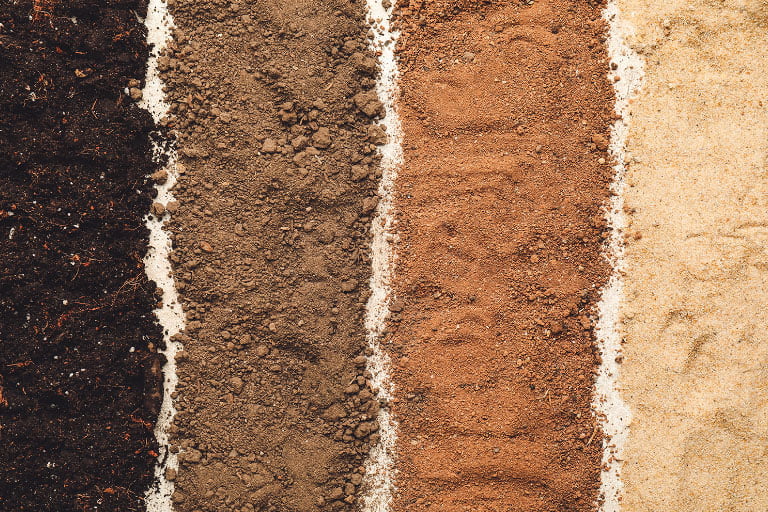
Sandy Soils
Large granular size, low pH, easy to prep, good drainage and high oxygen levels.
Silt Soils
Silt is mainly composed of minerals like quartz and fine organic matter. It is great for nurturing seedlings as it holds moisture well, is very fertile with good drainage and is easy to work with when wet.
Loam Soils
Loam is actually a combination of sand, silt and clay soils (40/20/20 ratio) and contains organic compounds at a level of 20% plus. It is popular for indoor growing as it has:
- Near neutral pH
- Good drainage
- Retains water well
- Good oxygen levels
- Naturally fertile
Loam is a great choice of medium for any potted plants as it contains a great balance of all three soil types. This helps to ensure that you have high calcium levels and a high pH.
Clay Soil
Clay soil consists of fine crystalline particles, created during a chemical reaction between minerals and other natural matter. Often considered the best soil to use for growing organically. It is a heavy soil with a high pH.
Top Tips for Using Soil
Quality
Using a basic, poor-quality soil won’t be as a good as a premium, purpose-made soil. So your plants won’t perform to their full potential. Poor quality soils may hold on to too much water or drain too quickly washing nutrients out. As a result, it’s likely your plants will display deficiencies in certain nutrients, stunting growth.
To ensure your plants receive everything they need for optimal growth, use quality organic soils with a full spectrum of nutrients.
Texture, Drainage and Water Retention
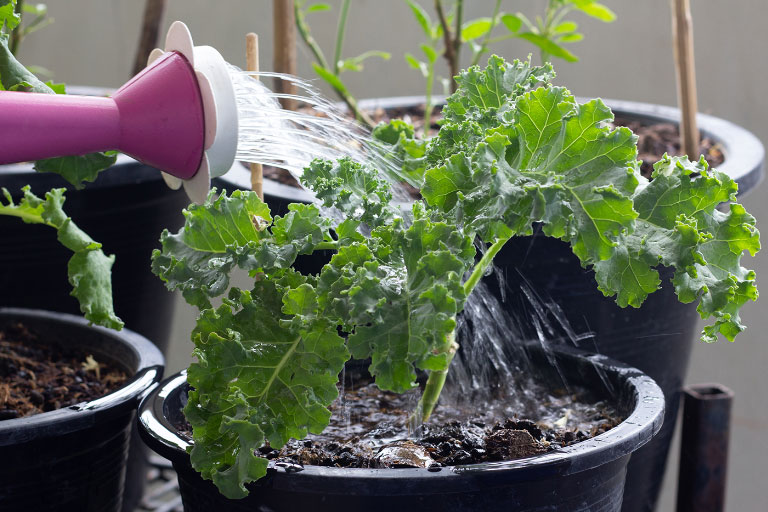
The three key things you want from soil to ensure you grow healthy plants are:
- Loose texture
- Good drainage
- Good levels of water retention
Without a loose soil texture, your plants won’t be able to develop strong roots. Soils that don’t have good drainage, are liable to end up being over watered. This will starve your plants of oxygen. And, without good water retention, your roots will dry out quickly and become damaged.
Know What a Good Soil Looks Like
A good soil will usually look nice and dark, like used coffee grounds. Using good soil will provide you with a loose, sandy texture that results in it providing good water retention without water-logging, suffocating the plant of oxygen.
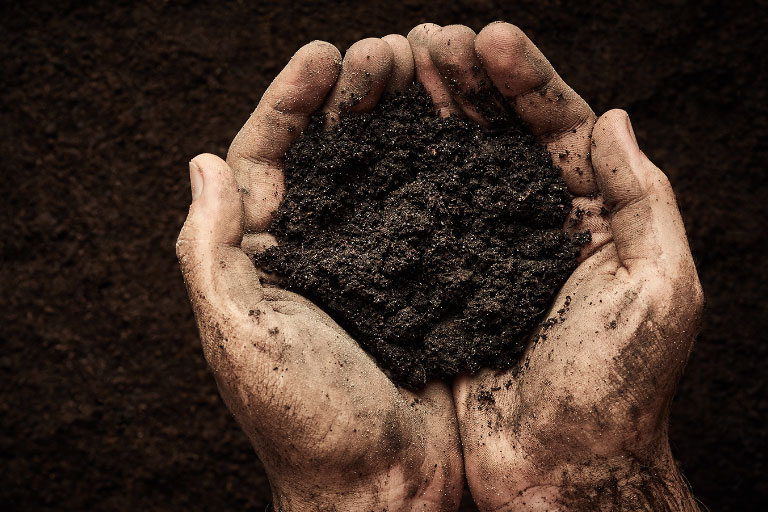
Boosting Your Soil
Depending on what you are growing, it’s could be a good idea to mix soil with a combination of coco coir, perlite or clay balls. This results in a boost to help with water and oxygen retention with improved drainage. Good organic soils will already have natural levels of nutrients, so in the early stages you won’t need much in the way of fertilisers.
Keep Conditions Right
Whether you buy a potting soil mix or make your own, you’ll want to create an environment that encourages any naturally present beneficial organisms to thrive. The best growing environment with soil has:
- Light texture offering access to plenty of oxygen
- Adequate water retention (moist but not wet)
- A pH value of 5.8-6.5
- Temperature around 20C
- Plenty of available nutrients
Re-using Soil
Properly maintained soil that is kept healthy throughout your grow, could be reused. As a result, reusing soil will save you money and can improve the quality of your soil on a subsequent grow. If you keep your soil healthy with regular fertilising and composting, you can simply mix the existing soil in with 50% new soil at the start of your new cycle. However, if your soil produced poorer results or you believe it to be unhealthy for any reason then do not take the risk, just dispose of it. Any pathogens present could be passed into new mixes.
Soil Enzymes
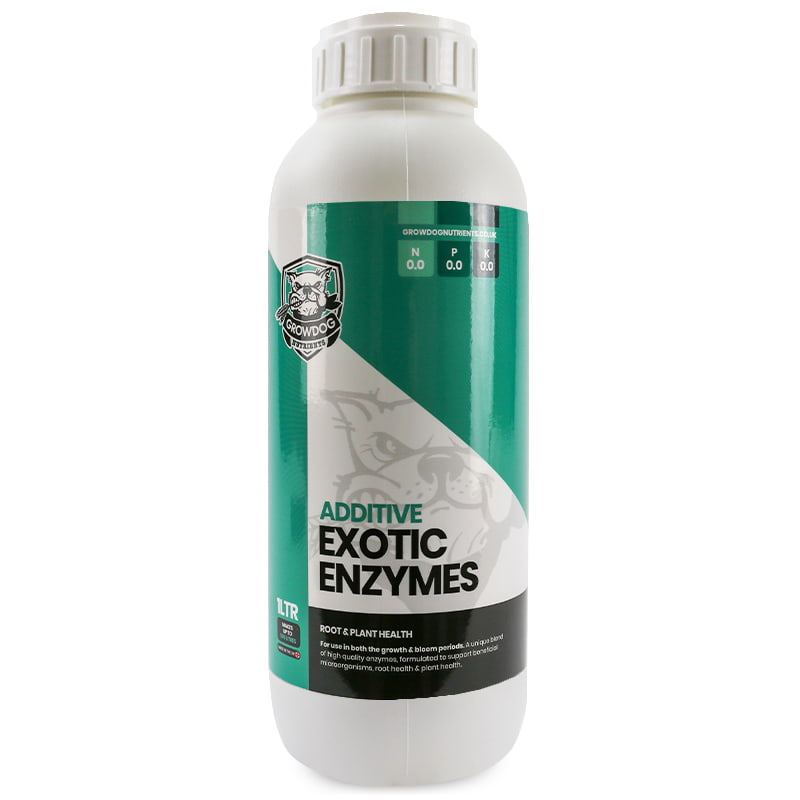
Products like GrowDog Exotic Enzymes break down dead roots and other soil-based organic matter. Enzymes helps to prevent issues with root pathogens. They work by breaking decaying organic material down to simple nutrients for the plant to recycle as food. Using enzymes to improve your soil give them a better place to thrive and recycling any decaying organic matter means there’s fewer places for plant pathogens to take hold.
Use “Companion” Plants to Improve Soil Quality
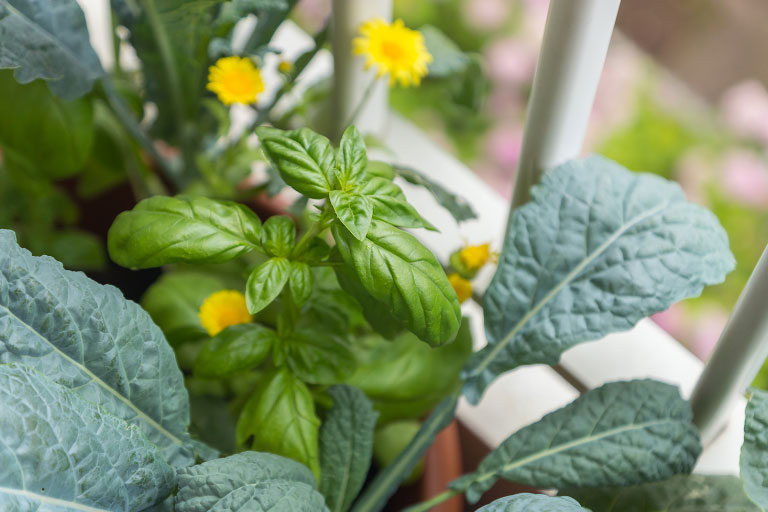
Companion planting can improve the quality of your type of soil and keep it disease free. For instance, the idea being that your companion plants provide a natural kind of crop diversity. It works with beneficial plants grown in close proximity to other species in nature. This can improve soil quality or water retention, fix nitrogen deficiencies and repel unwanted pests to name a few benefits.
Why not do your own research into what plants are good “companions” to grow alongside your chosen species. Make sure you use a bigger pot than normal if you plan on trying this yourself, as you will need more space for all those roots!




